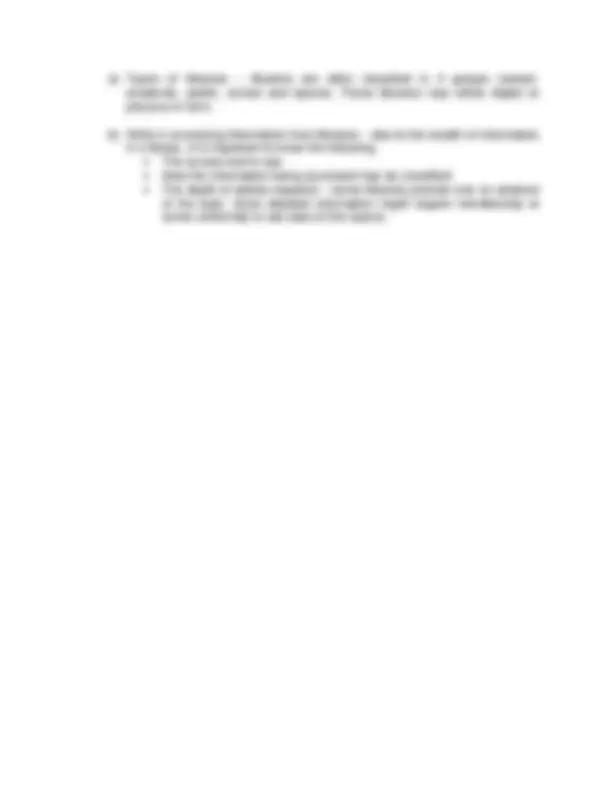



Study with the several resources on Docsity

Earn points by helping other students or get them with a premium plan


Prepare for your exams
Study with the several resources on Docsity

Earn points to download
Earn points by helping other students or get them with a premium plan
Community
Ask the community for help and clear up your study doubts
Discover the best universities in your country according to Docsity users
Free resources
Download our free guides on studying techniques, anxiety management strategies, and thesis advice from Docsity tutors
This document is about the different media and information sources and their characteristics.
Typology: Lecture notes
1 / 2

This page cannot be seen from the preview
Don't miss anything!


NOTES IN MEDIA and INFORMATION LITERACY: MEDIA AND INFORMATION SOURCES A. Indigenous knowledge B. Library C. Internet D. Mass Media Reliability of Information – information is said to e reliable if it can be verified and evaluated. Others refer to the trustworthiness of the source in evaluating the reliability of information. Accuracy of Information – accuracy refers to the closeness of the report to the actual data. Measurement of accuracy varies, depending on the type of information being evaluated. Forecasts are said to be accurate if the report is similar to the actual data. Value of Information – information is said to be of value if it aids the user in making or improving decisions. Authority of the Source – much of the information we gather daily do not come from a primarily source but are passed on through secondary sources such as writers, reporters, and the like. Sources with an established expertise on the subject matter are considered as having sound authority on the subject. Timeliness – reliability, accuracy, and value of information may vary based on the time it was produced or acquired. A. INDIGENOUS KNOWLEDGE
a) Types of libraries – libraries are often classified in 4 groups namely: academic, public, school and special. These libraries may either digital or physical in form. b) Skills in accessing information from libraries – due to the wealth of information in a library, it is important to know the following; The access tool to use How the information being accessed may be classified The depth of details required – some libraries provide only an abstract of the topic. More detailed information might require membership or some conformity to set rules of the source.